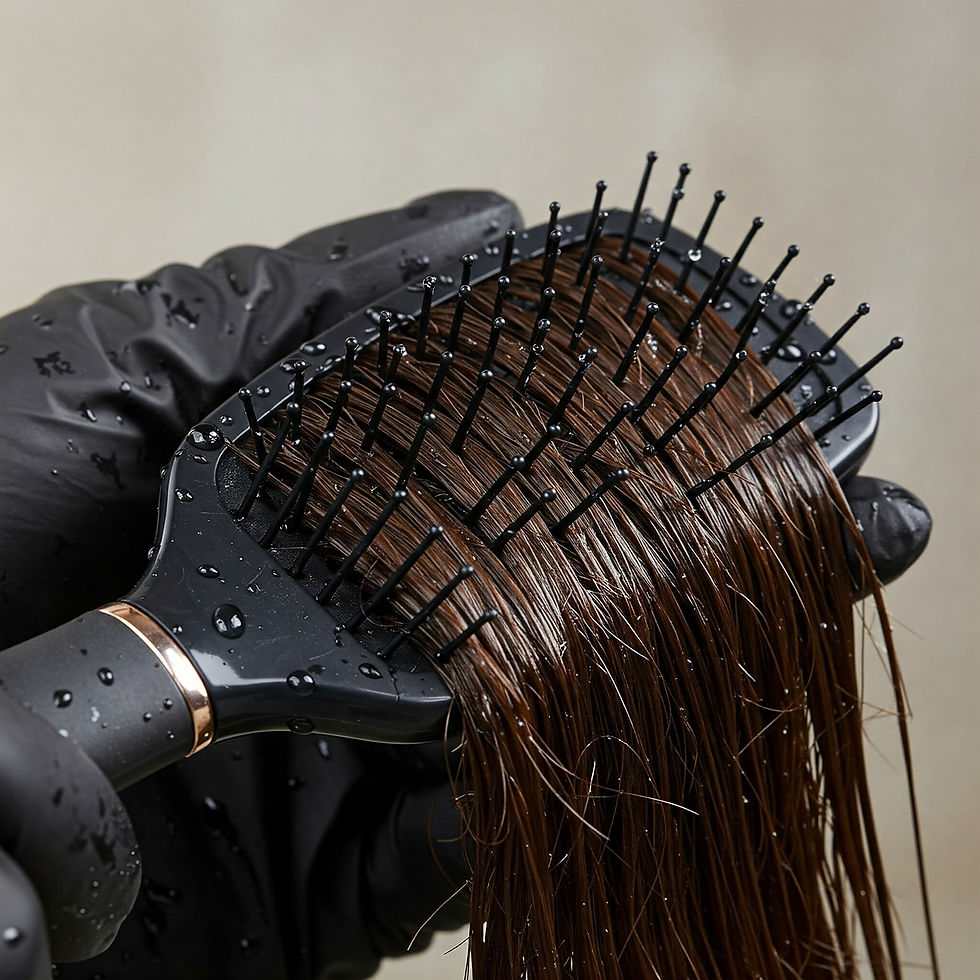Say Goodbye to Tears: Understanding and Managing Tender Headedness in Little Girls or Boys!
- Ash Tonee
- Apr 27
- 3 min read
Hey Viva Fam,

Is brushing your little one's hair a daily battle? Do you dread the cries and struggles that come with every tangle? If so, you're not alone! Many children experience "tender headedness," or sensitivity and pain when their hair is brushed or styled. This can make a simple task feel like a major challenge for both you and your child. But don't worry – with a little understanding and the right approach, you can turn hair brushing time into a much smoother experience.
What is Tender Headedness?
"Tender headedness" refers to a sensitivity or pain felt on the scalp, often associated with brushing or styling hair. It's particularly common in little girls, often becoming noticeable when their hair is long enough to require regular care, typically between the ages of 2 and 6.
What Causes Tender Headedness?
Several factors can contribute to a child's tender scalp:
Sensitive Scalp: Young children simply have more delicate and sensitive skin, including their scalps.
Fine Hair and Tangling: Fine hair is prone to tangling and knotting, and brushing out these snarls can be painful.
Pain Perception: Children are still developing their pain tolerance and may express discomfort more readily.
Tight Hairstyles: Ponytails, braids, and other styles that pull hair tightly create tension on the scalp.
Improper Brushing: Brushing too aggressively or using the wrong tools can cause discomfort.
Dry Scalp: An itchy or dry scalp can be more sensitive to touch.
Tips and Tricks for Pain-Free Brushing

Turn hair brushing from a battle into a bonding experience with these helpful tips:
Use the Right Tools:
Detangling Brush: This is your best friend! Look for a brush with thin, flexible bristles that glide through hair without pulling. Here's what one looks like:

Wide-Tooth Comb: Excellent for gently working through larger tangles, especially on wet hair.
Soft-Bristle Brush: Use after detangling for smoothing the hair.
Detangling Products are Key:
Leave-In Conditioner or Detangling Spray: Apply generously before brushing, especially on dry or damp hair.
Regular Conditioner: Use a good quality conditioner in the bath or shower.
Master the Gentle Technique:
Start from the Ends: Always brush from the tips of the hair and work your way up.
Hold Sections: Hold the section of hair above the tangle to prevent pulling on the scalp.
Brush in Sections: Divide hair into smaller sections for easier management.
Hairstyles Matter:
Avoid Tight Styles: Opt for looser ponytails and braids.
Vary Styles: Don't always tie hair up in the same spot.
Loosen Before Bed: Take out tight styles before sleeping.
Wet Hair Requires Extra Care: Wet hair is fragile! Use a wide-tooth comb or a wet brush and a detangler.
Make it a Positive Experience:
Communicate: Encourage your child to say "stop" if it hurts.
Distract: Put on a favorite show or sing songs.
Be Patient: Rushing will only make it worse.
Check the Scalp: Look for any signs of redness, dryness, or irritation. If you see anything unusual, consult a doctor.
With patience, the right tools, and gentle techniques, you can transform hair brushing time from a tearful ordeal into a comfortable and even enjoyable routine for you and your little one.
For those with tender headedness: Did you experience "tender headedness" as a child, and what helped you (or would have helped you) manage it? For parents: What are your best tips for making hair brushing a more comfortable experience for your child? Share your comments below!







Comments